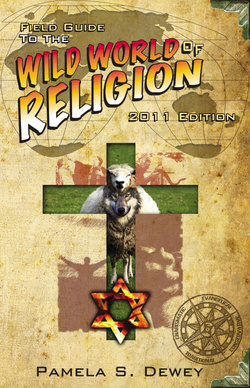Читать книгу Field Guide to the Wild World of Religion: 2011 Edition - Pamela J.D. Dewey - Страница 29
На сайте Литреса книга снята с продажи.
Trend Four: The Walmart-izing of the local church scene
ОглавлениеIn the 1970s and earlier, most American towns and cities had a variety of churches, and each one of them filled a unique niche in the community. Even the largest seldom had congregations over 500 or so. If a church got much bigger than that, it would be common for it to spawn a sister congregation on the other side of town. This is much like the business sector of towns during the same time period. A wide variety of local businesses would fill the needs of local shoppers, from grocery stores to pharmacies, hardware stores, clothing stores, toy stores, and more. If a town was large enough, it might even support a grocery store on each end of town, catering to the needs of the surrounding neighborhoods.
And then came Walmart (and similar discount stores). Now shoppers could find almost all of their wants under one roof, from lettuce to ladders, from aspirin to Barbie Dolls. The wholesale buying power of such chain stores allowed them to sell all of these things more inexpensively than could the local shops. Thus began the decline of local businesses in many towns. Even those that managed to survive have seldom grown larger. They appeal mostly to either old-timers who like doing business with familiar faces, or people who like the convenience of not having to drive to the outskirts of town to get to the mega-store.
This same trend has developed in the Wild World of Religion. As mentioned earlier, the big, thriving churches of the 1950s would be in the center of the town, and the tiny independent Pentecostal churches would be on the outskirts. Those big church buildings are still in place in most towns, but they are no longer thriving. Their congregations are dwindling, as fewer and fewer of the latest generations of Americans have been attracted to “that old-time religion.” And the independent Pentecostal churches are still on the outskirts of town—but they are no longer in those tiny buildings. Of course, most prefer the label “Charismatic” now, rather than Pentecostal. The Charismatic movement is one of the fastest growing religious “brands,” in both America and the world. (See the Pentecostal and Charismatic: What’s the Difference? chapter for an explanation of the two terms.) Many towns now boast huge Charismatic mega-church complexes on the outskirts of town. The sanctuaries of some of these churches can hold many thousands, and some of them even fill those sanctuaries two or more times on a Sunday with different crowds. In the hallways outside many of these huge sanctuaries, one can find almost a “mall” of facilities. There may be everything from cappuccino shops and bookstores, to conference rooms for AA meetings, single parent clubs, and senior citizen gatherings. Farther down the hallway will be the gym for the “Praisercise” classes, and Youth Ministry rooms that feature videogame machines, pool tables, and a stage for the visiting contemporary Christian music bands that play for special events.
Little wonder that many of the families who have drifted away from the stagnating “old” churches, which seem to have so little to offer other than a church service on Sunday morning and Wednesday evening, have ended up checking out the Walmarts of Religion. The music for the mega-church worship service is often very professional, inspirational, and contemporary. The enthusiasm of the audience is infectious, and the dynamic personality of the Pastor very appealing to many. The one thing which visitors may find missing, if they know to look for it, however, is the same thing missing from many Charismatic TV shows—solid biblical teaching. The sermons in many such churches seem to be a steady diet of “health and prosperity” teaching and little else.
